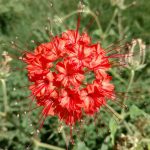Plumeria
–
–
–
 Toxic
Toxic Full Sun
Full Sun Low
Low Flowering
Flowering
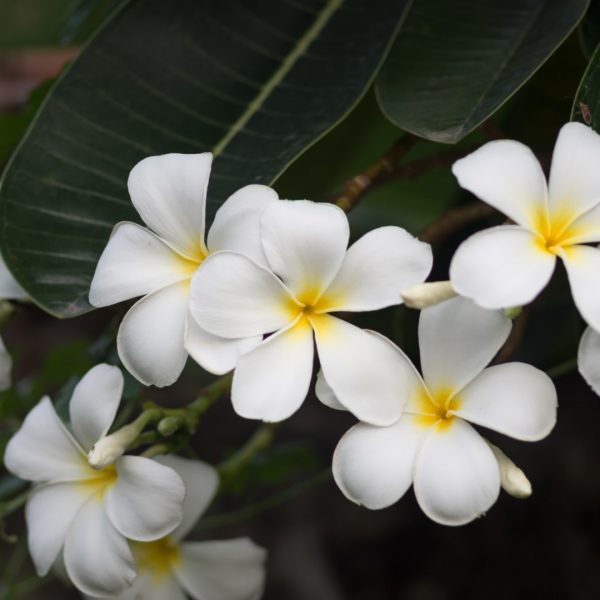
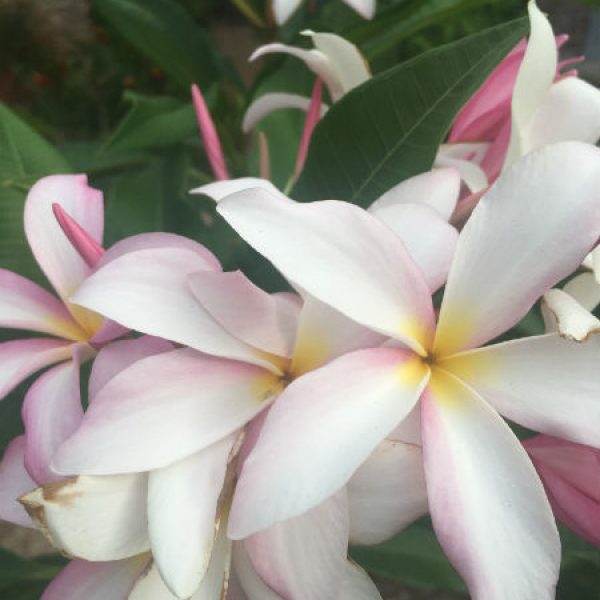
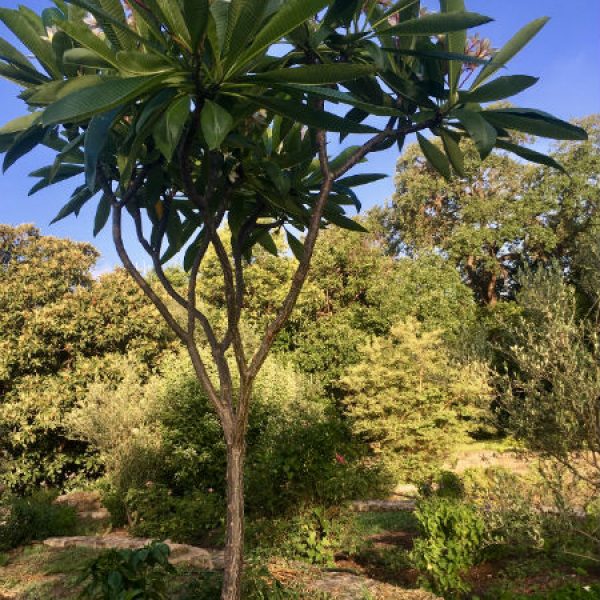
About This Plant
A shrub the size of a small tree, with waxy flowers and a terrific perfume familiar to anyone who’s ever been presented a Hawaiian lei. The big tropical leaves toss in the softest breezes, lending a tropical flavor to any landscape. Despite its Polynesian vibe, though, plumeria is actually native to Mexico and Central America, with all the accompanying watersaver credentials. Many gardeners count it among their drought-hardiest potted specimens; it makes a great textural companion to many of the little-leaf xeric plants.
Cultivation requires some attention to plumeria’s specific needs, because it can easily develop root rot if not placed in well-drained soil and allowed to dry out between waterings. Although it can be grown in the ground, in south-central Texas it’s probably easiest to grow in containers.
Maintenance
Plumerias can’t tolerate waterlogged soil; to keep them from developing fungal disease, allow them to dry out between waterings. Bring plants indoors in winter, especially if temperatures drop below 20 degrees. Plumerias can actually be pulled out of the pot and stored bare-rooted, uncovered (!) in the garage or shed to keep them dry in winter.
Features
This plant goes well with
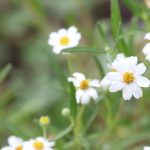 Melampodium leucanthum
Melampodium leucanthum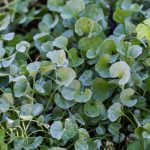 Dichondra argentea
Dichondra argentea
- List Item #1
- List Item #2
- List Item #3






